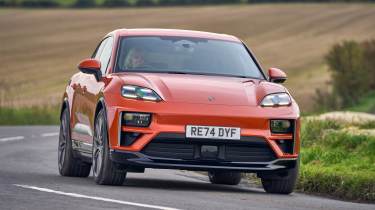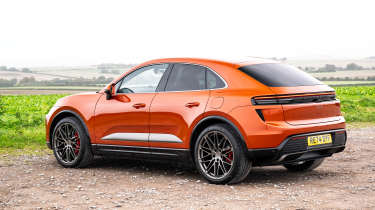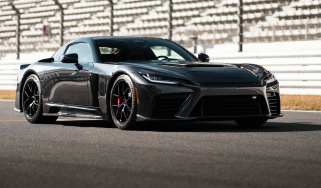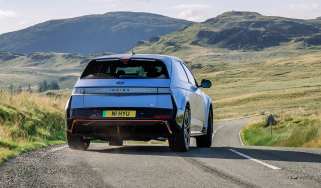Porsche Macan Electric review – still the driver’s choice for SUVs?
The Porsche Macan has gone electric for its second generation, with up to 630bhp and the promise of a rewarding drive
Don't be fooled by the familiar name; the second-generation Porsche Macan represents something entirely new. Not only has it gone fully-electric, it’s the first Porsche to ride on the brand new Premium Platform Electric (PPE) architecture – co-developed with Audi – that will underpin future EVs from the company. The original Macan was an emphatic success both in terms of execution and popularity, and this new version also has the tools to be a class-leading premium SUV.
Despite the switch to electric, the Macan’s fundamental philosophy hasn’t changed. It sits below the Cayenne and aims to bring some life to the SUV driving experience, with hints of sports car DNA in its make-up. It’s a different route to the one Audi has taken with its new PPE-based Q6 e-tron, which is a loping, relaxing EV with little in the way of sporting pretence. But as we’ll discuss, the end result is an electric SUV with a distinctly Porsche feel, and impressively high levels of ability.
> Tesla Model Y Performance review – a Porsche Macan on a budget?
- Engine, gearbox and technical highlights > Up to 630bhp and Porsche’s new-gen EV platform, plus its latest (and mostly optional) chassis electronics
- Performance and 0-62mph time > The ‘slowest’ Macan will match a Golf GTI off the line. The quickest will out-accelerate a BMW M5
- Ride and handling > In the right conditions the Macan has more poise and precision than any of its rivals, but all that mass can’t be completely hidden
- Interior and tech > The driving position, build quality and tech are first rate, but the environment is understated rather than sumptuous
- Range and running costs > A claimed range of nearly 400 miles is up there with the best in class. The most powerful Turbo doesn’t take a massive efficiency hit, either
- Design > The electric Macan’s more bloated, fastback look won’t be for everyone
Price and rivals
For the £67,200 Porsche charges for the base Macan, you can get your hands on a number of premium electric SUVs from the likes of BMW, Tesla and Audi, but few offer the same blend of quality, range and dynamic ability. BMW’s iX is one contender, costing from £70,985 in xDrive40 Sport form and delivering exceptional levels of comfort and luxury. It can’t match the Porsche’s performance, though, and it's hard to ignore the Macan’s massive 134-mile range advantage. With its 3.5sec 0-60mph time and £59,990 price tag, the Tesla Model Y Performance gets you a lot of performance for the money, but the Porsche is immeasurably more polished, more premium and more satisfying to drive.
Audi’s Q6 e-tron starts from £60,700, and comes with the same PPE underpinnings as the Macan – albeit with a different chassis calibration which gives it a very different character from behind the wheel. It’s less incisive and much less sporting, but some might appreciate its more laid back character and cruising ability.
The Macan Turbo, meanwhile, moves into the firing line of the Lotus Eletre and BMW’s iX xDrive50 with its £95,000 price tag. It outpaces both rivals but the xDrive50 offers better GT qualities and a more luxurious cabin, and the Lotus a more dramatic, space-age design and cabin.




